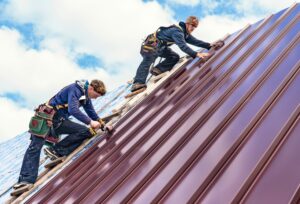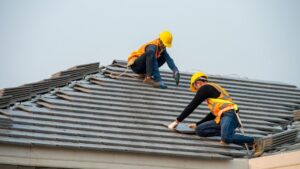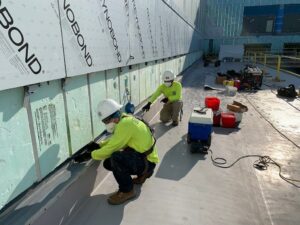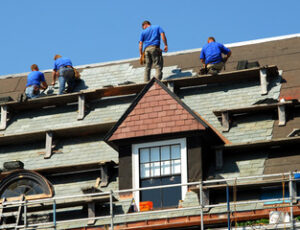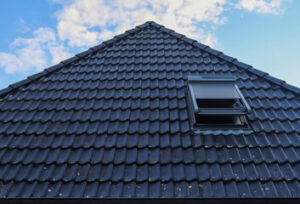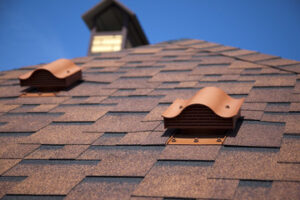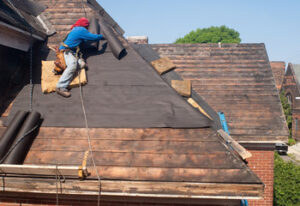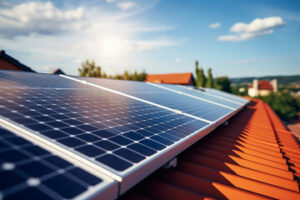Commercial establishments come in many forms and designs. But they all require superior protection to avoid costly losses. This is why business owners rely on the services of qualified roofers like Roofers.
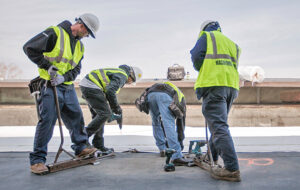
Many commercial clients have already determined which kind of roof they want before seeking quotes. They often work with engineering firms, roof consultants, and property managers.
Roofers work at heights and are exposed to various environmental hazards. They must follow strict workplace safety protocols to protect themselves and those on the ground or in the building below. This includes proper equipment and training. It also includes a thorough plan for dealing with any potential hazards that could arise during the project.
All roofing projects have a certain amount of risk, but there are ways to minimize those risks and prevent injuries for all parties involved. One way is to create policies that promote rooftop safety and make sure they’re well-communicated and strictly followed. This can include everything from limiting who has access to the roof to following safety equipment regulations. Another important step is to perform routine inspections of all equipment, from specialized tools like ladders and scaffolding to fall protection equipment. Any equipment that isn’t in good working condition should be replaced right away.
The most common type of injury for roofers is falls. They can cause serious damage and even death. These can occur because of a lack of training, poor equipment, or simply being unaware of the environment around them. To prevent these accidents, commercial roofers should use safety harnesses whenever they’re working at heights and be mindful of their surroundings. They should also keep their tools secured and padded to prevent them from being dropped or falling off the edge of the roof.
Having a safety plan in place is vital for any construction job, but especially for roofers. It’s crucial for them to communicate with each other and the building’s facilities staff about any potential issues or hazards that may arise while they’re on the roof. They should also avoid going up on the roof during inclement weather, as this can increase the risk of accidents and heat stroke.
Having the proper tools and equipment is essential for any roofing job. This includes a variety of personal protective gear, including harnesses, hard hats, and gloves. In addition, it’s important to wear comfortable clothing that’s not restrictive or bulky. Also, make sure to wear shoes with plenty of traction, as this can help prevent slips and falls.
Experience
Commercial roofers spend their workdays assessing, fixing, and installing roofing systems on business facilities. These facilities range from office buildings and retail stores to warehouses, schools, hospitals, and high-rise structures. They also work with a variety of materials, including asphalt shingles and flat roof systems. Aside from the technical aspects of these jobs, they must be able to work with business clients and manage construction projects effectively.
During the interview process, hiring managers may ask you to describe your experience working on challenging roofing projects. These questions are designed to assess your ability to overcome obstacles and deliver quality results. Your answer should demonstrate your understanding of the industry, your commitment to safety, and your problem-solving skills.
In the beginning, a new commercial roofer might have difficulty finding work. To make up for this, he or she should start by bidding on smaller jobs that are not only easier to win but also less risky from a liability perspective. This will help him or her build a reputation in the industry and grow the company’s client base.
Some of the most common problems a commercial roofer needs to deal with are leaks and storm damage. These issues can disrupt the operations of a business and lead to expensive damages. As a result, it is important for a commercial roofer to have the practical experience and problem-solving skills to quickly identify and repair these problems.
Another aspect of the job that is often overlooked is the need to follow building codes. Typically, these codes require that roofs be installed and maintained according to specific specifications. This ensures that the roof can provide adequate protection and energy efficiency to the building.
Some of the most effective ways to gain experience as a commercial roofer are to learn from experienced professionals and join a trade organization. These organizations can provide valuable networking opportunities and give you a leg up on the competition. Skujins, for example, has joined a local association to network with other roofers and get referrals for work. He also recommends starting out by bidding on smaller jobs, as these are more affordable and will give you the necessary experience to take on bigger ones.
Accessibility
Many of the same roof materials used on residential homes are also available for commercial buildings. However, commercial roofs typically have a different environment and require a more durable roofing system. Commercial roofers can help building owners choose the best roofing system for their needs. They can also provide regular inspections and maintenance that help extend the life of a roof.
Regular roof maintenance and professional inspections can help building owners save money in the long run by identifying minor problems before they cause major damage. A roof inspection can identify the location of leaks, missing shingles, and other issues that can lead to premature roof deterioration. These problems can be easily repaired with scheduled maintenance and prompt action.
Commercial roofers are responsible for constructing the roofs of businesses and other large structures. They can build a variety of roofs, including single-story mom and pop shops and skyscrapers. A professional roofer will have years of experience and knowledge in installing various roofing systems. They will also adhere to OSHA guidelines and building codes to ensure the safety of the employees working on the roof.
When hiring a commercial roofer, it is important to find one that has a local office and carries workers’ compensation insurance. A reputable contractor will post this information on their website.
Besides being licensed and insured, a commercial roofer should have an established business with a solid track record. They should be able to answer questions about their work and offer references from satisfied clients. If you are not sure about the quality of their work, ask for an estimate. Then, you can make an informed decision about hiring them for your next project.
It is also important to consider the amount of time it will take to complete a project. A reputable company will provide an accurate timeline and will be able to finish the job within budget. They will also have the equipment and resources necessary to get the job done. In addition, they will have a dedicated team of professionals who will provide you with the highest quality service.
Reputation
The reputation of a commercial roofer is one of the most important aspects of their business. A good reputation will help them win new clients, and a bad reputation can be disastrous for their business. In order to maintain a positive reputation, roofing contractors must take several measures. Some of these include: providing quality work at a fair price, using professional materials, and following safety standards. Moreover, they should also strive to improve their online visibility. This will increase their brand awareness and lead to a higher number of leads.
Moreover, a roofing company must prioritize the needs of their clientele and address any concerns they may have. For example, structural issues such as sagging or bowing are serious problems that can compromise the integrity of a building and endanger the safety of its occupants. These issues can be caused by improper installation or heavy loads on the roof. They should be addressed promptly to minimize damage and prevent further damage.
In addition, a roofing company should offer a warranty on their services. This will reassure customers that the company is committed to its reputation and will provide high-quality service. Additionally, a warranty will ensure that the company can repair any problems that may arise during the project. Moreover, it will protect the interests of both parties in case of a dispute.
Another way to boost a commercial roofing company’s reputation is by promoting their employees. They can do this by featuring them on their websites and social media pages. Adding their photos and bios will create a personal connection with potential clients, which will help them feel comfortable working with the roofer.
Furthermore, a roofing company should make their terms, pricing, and licensing clear on their website. This will help prospective clients make an apples-to-apples comparison of competing bids and determine which one is best suited to their roofing needs.
The reputation of a commercial roofer is the general perception that people have about them. A good reputation is indicative of trust, kindness, and skill. A bad reputation, on the other hand, is indicative of dishonesty and lack of reliability.
